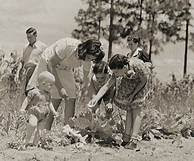 |
| Poster for War Gardens |
 |
| The Garden Primer |
 |
| A Victory Garden years ago. |
 |
| More posters telling you to participate in the victory garden. |
 |
| How to make an outdoor seed box. |
 |
| Many people today have neighborhood plots. |
 |
| Poster for War Gardens |
 |
| The Garden Primer |
 |
| A Victory Garden years ago. |
 |
| More posters telling you to participate in the victory garden. |
 |
| How to make an outdoor seed box. |
 |
| Many people today have neighborhood plots. |
No comments:
Post a Comment